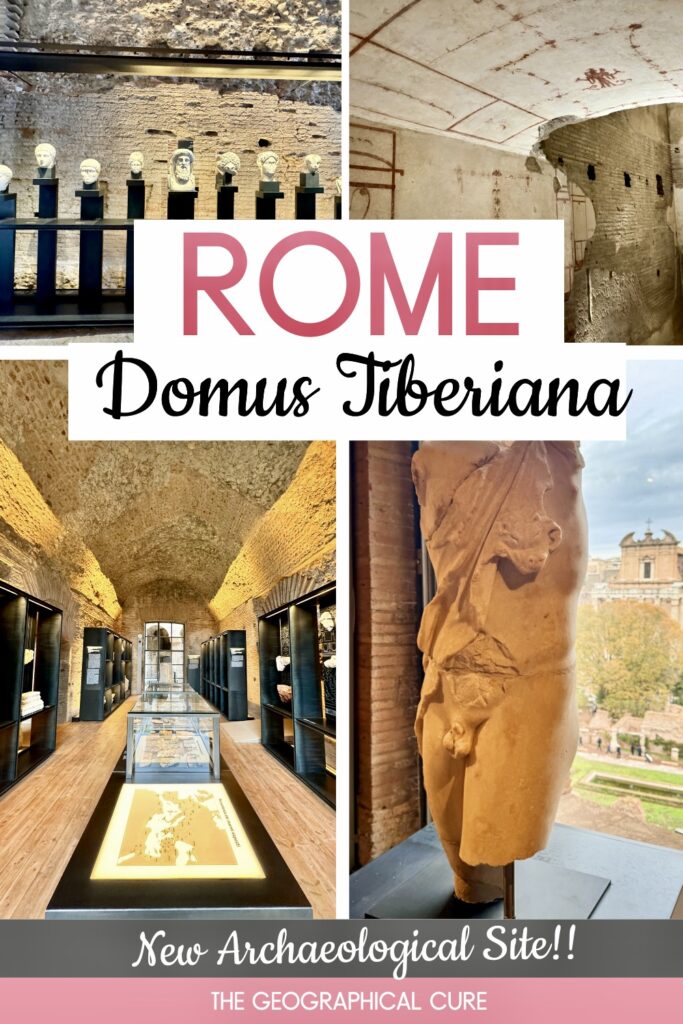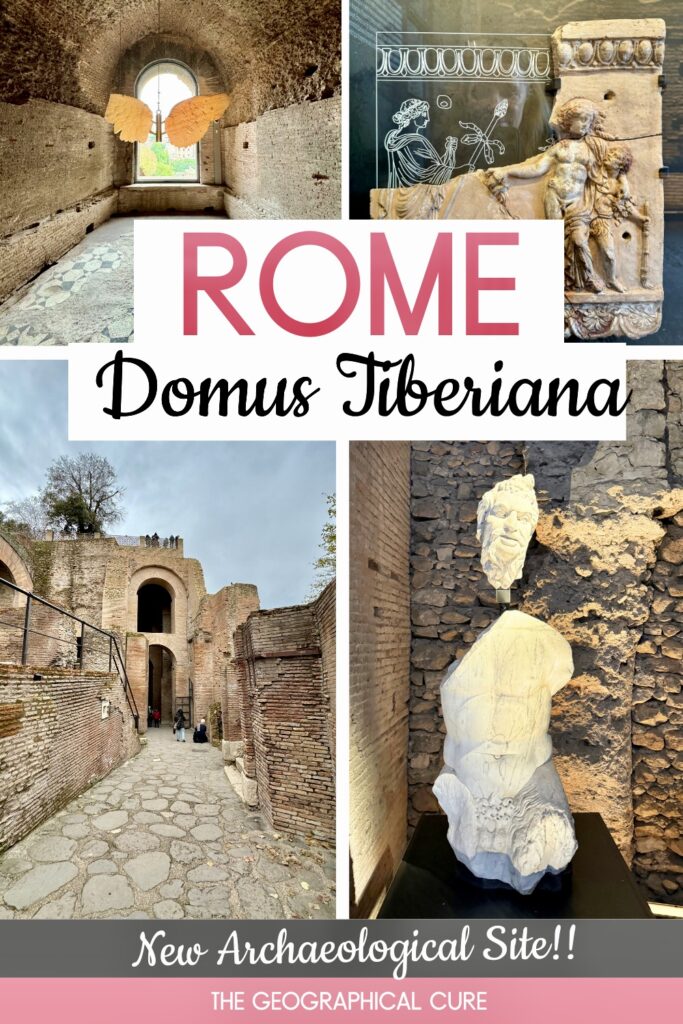At nearly 2,000 years old, the Domus Tiberiana opened its doors to the public for the first time in September 2023. I had the opportunity to visit this historical gem in December, and it was an exhilarating experience!
But in the 1st century AD, Domus Tiberiana was Rome’s first official imperial palace.
Despite being named after Emperor Tiberius, it was actually constructed during Nero’s reign. Nero was crowned on its very steps when he was just 16 years old.
After over 50 years of diligent excavation and meticulous restoration, parts of this ancient marvel were finally reopened to the public.
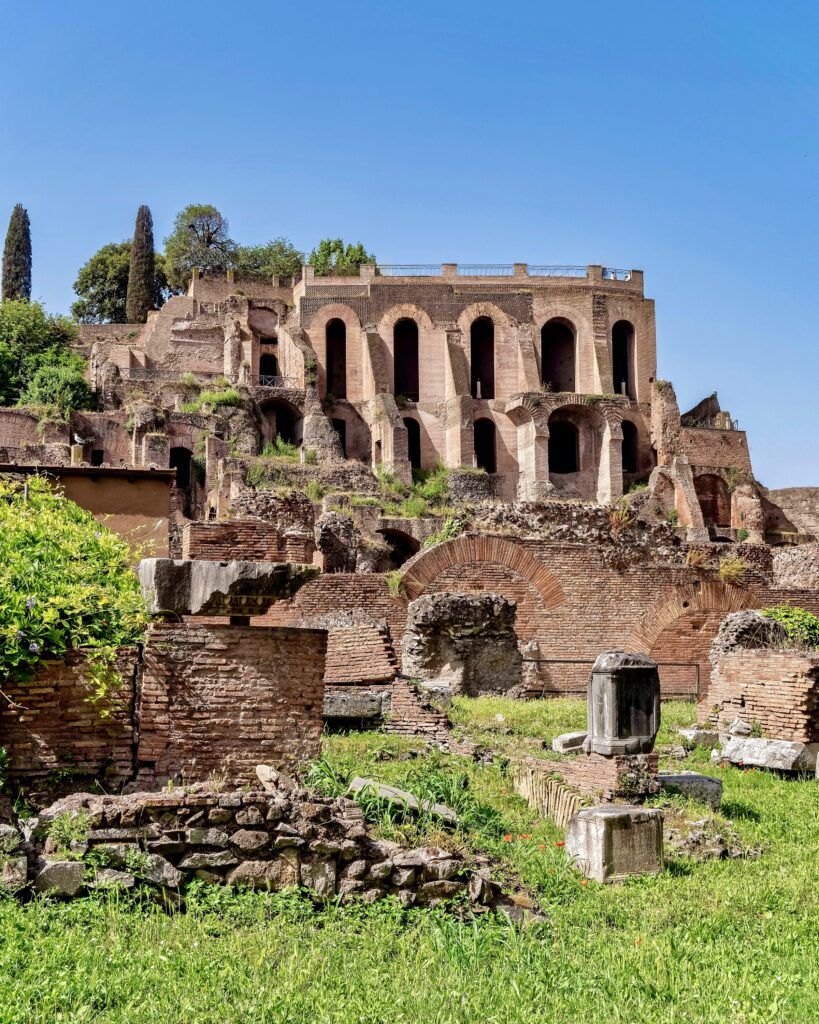
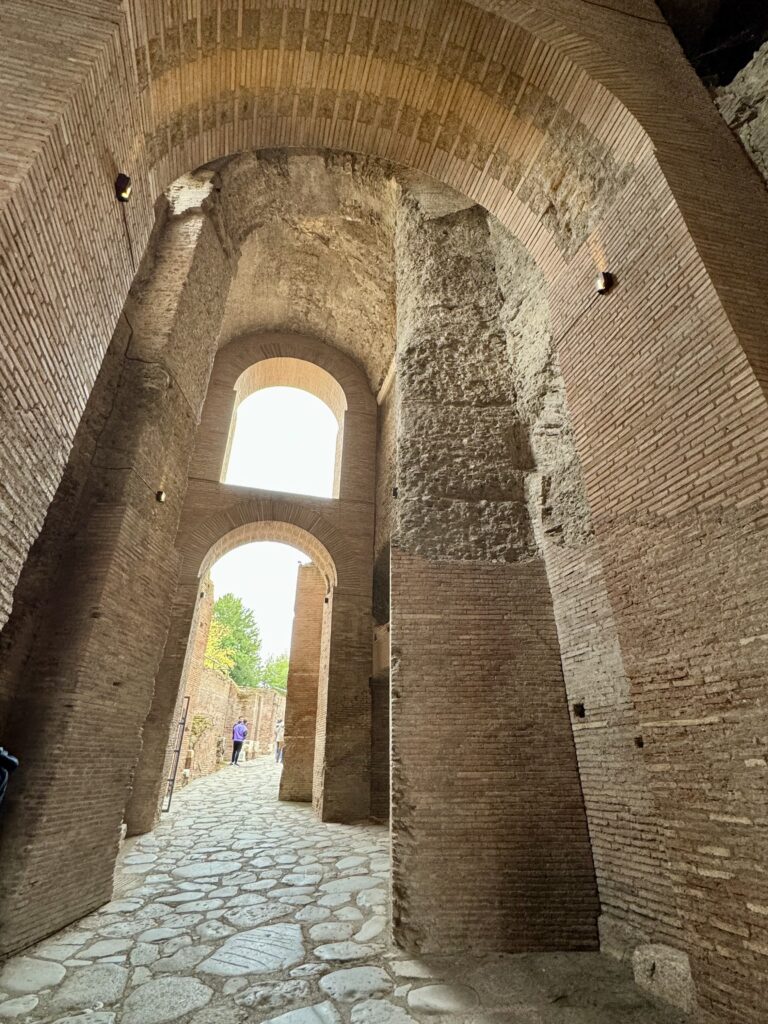
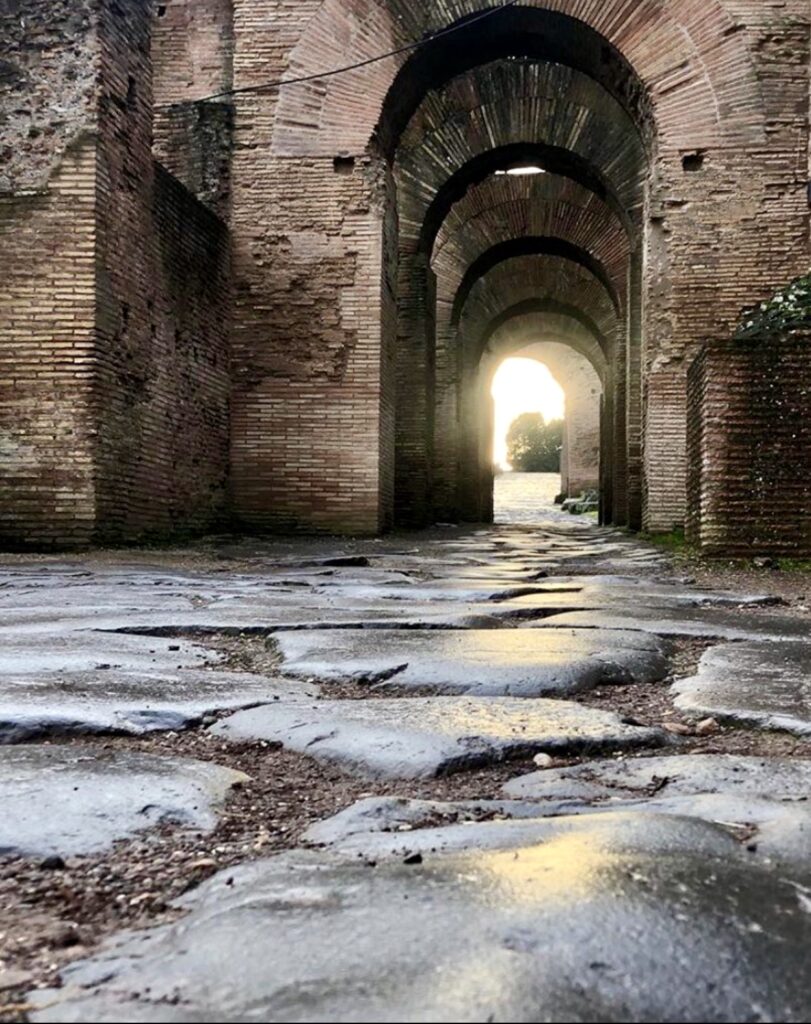
The ancient palace sits on Palatine Hill. It’s the massive arched building you see from the Roman Forum behind the House of the Vestal Virgins.
For years, it was shut due to the instability of the ruins. But today you can walk through what is effectively an open air museum.
I found it a rather moving experience, visiting something I had only gazed upon before.
To walk down these ancient paths, you’ll need to purchase a special SUPER ticket. Individual tickets are not available. For more on how that works, you can check out my guide to the SUPER ticket.
>>> Click to buy a SUPER ticket on Viator
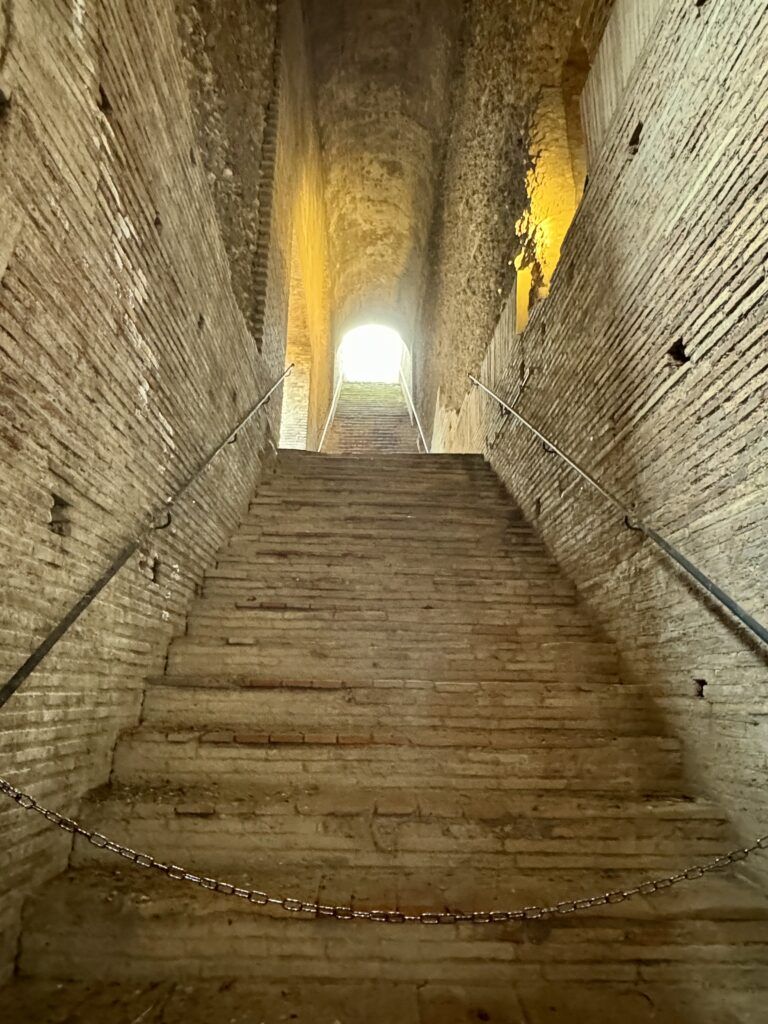
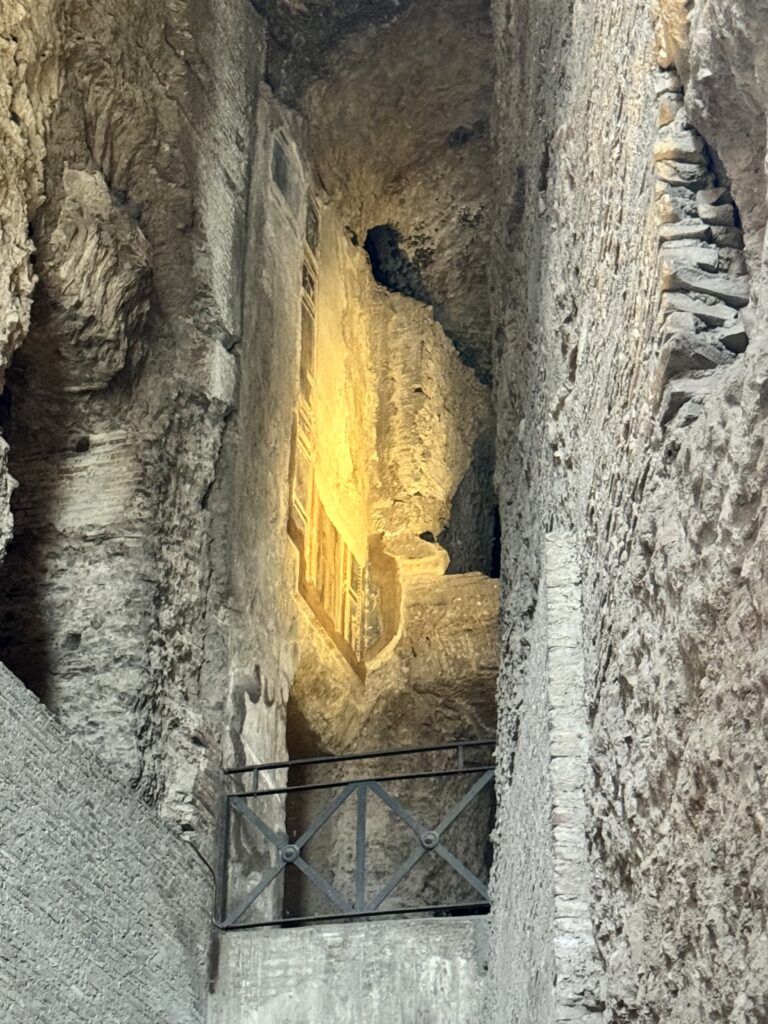
What Was Domus Tiberiana?
Domus Tiberiana was once a grand estate sprawling over almost 10 acres. There were opulent residences, gardens, rooms for the Praetorian guard, and places of worship.
Its prime location atop Palatine Hill meant that it was a “balcony” of the city. It’s on the northwest slope, the part favored by the Roman aristocratic families.
The first phase of the palace dates from about 64 AD, after the great fire of Rome. It’s the same period that Domus Aurea was built.
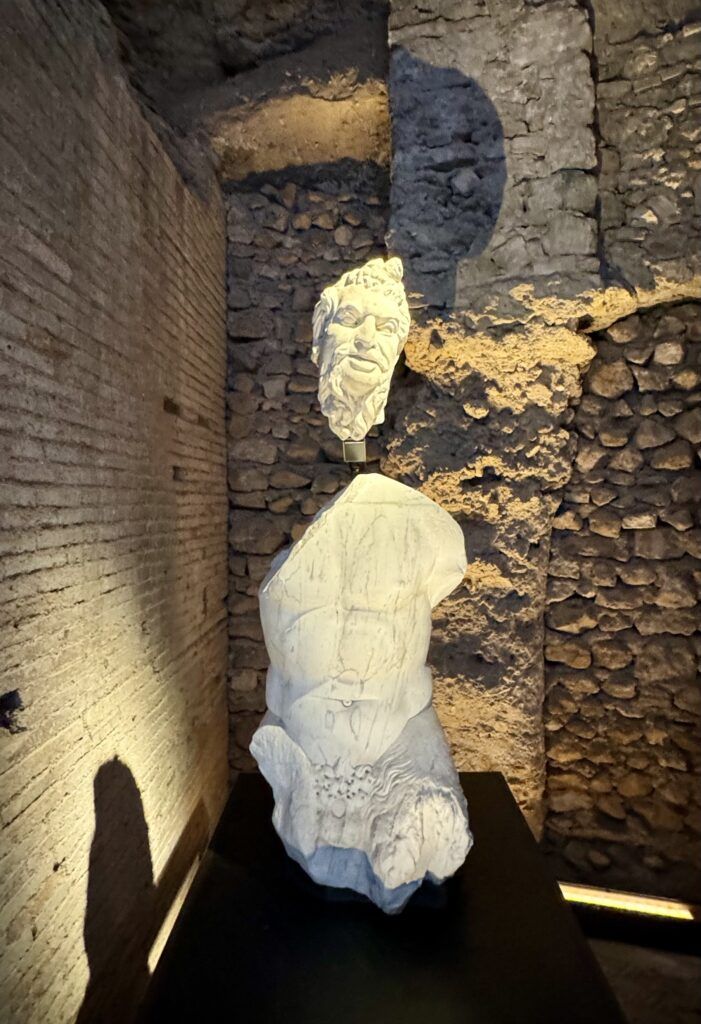
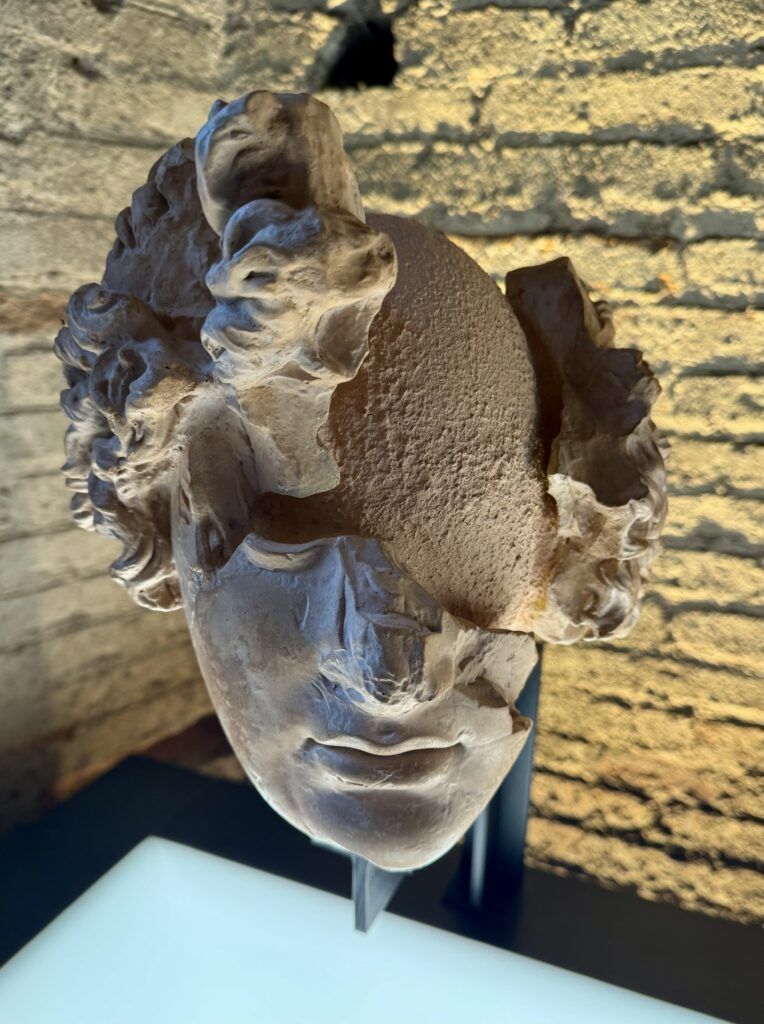
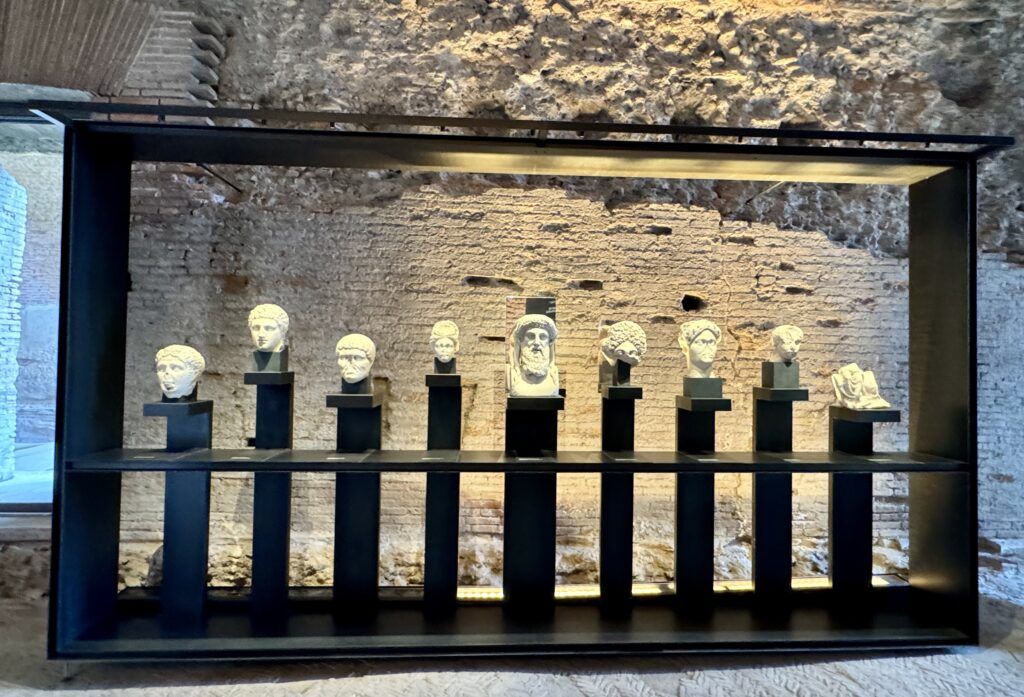
Over time, the palace underwent many extensions and renovations. The most important ones were by emperors Domitian and Hadrian.
In the prevailing “language,” this power palace consisted of gigantic forms and lavish ornamental decoration intended to represent the power and culture of Rome.
It was intended to be an “infinite palace … that touches the stars and is in everything similar to the grandeur of the sky.”
The imperial palace remained in use until the 7th century. With the decline of the Roman Empire, it was abandoned.
In the 16th century, the Farnese family laid out gardens, the Hori Farnesiani, on top of the palace obliterating parts of it.
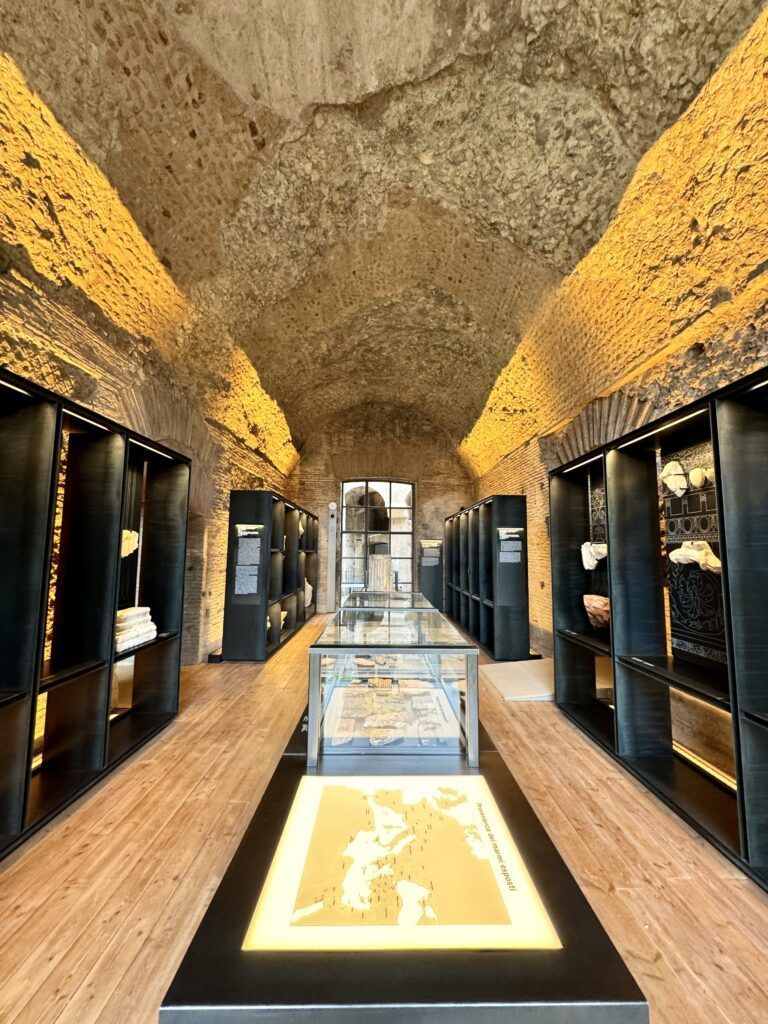
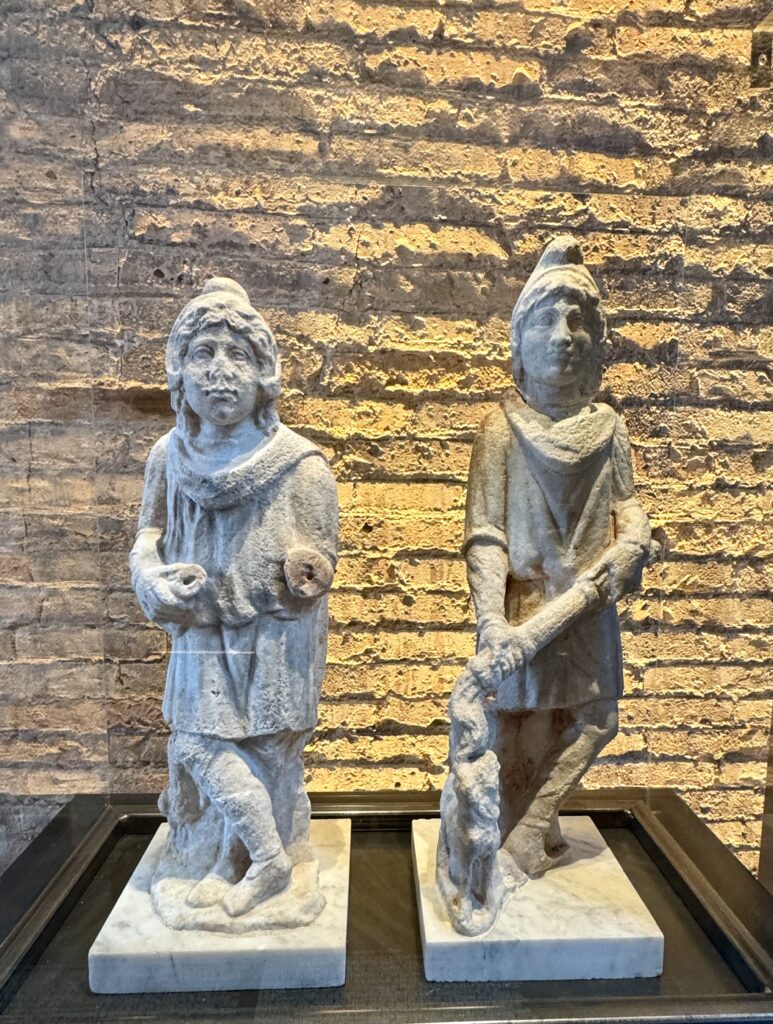
What Can You See?
Today, what remains of the Domus Tiberiana are primarily ruins. But archaeological excavations uncovered towering walls, cavernous corridors and rooms, and foundational elements.
Visitors are currently limited to the ground floor, as the second level hasn’t been stabilized for public access yet. Despite this, a glance upwards reveals glimpses of ancient stucco and fresco decorations, hinting at the former splendor.
The most intact portion is the multi-story northern facade, boasting tall arches that overlook the Via Sacra and the Roman Forum. This section was constructed during Emperor Hadrian’s time and is a testament to the architectural prowess of the era.
Historians believe that this part of the palace served as a substructure for further expansions. It’s thought to have housed apartments and office spaces, supporting the daily workings of the imperial household and administration.
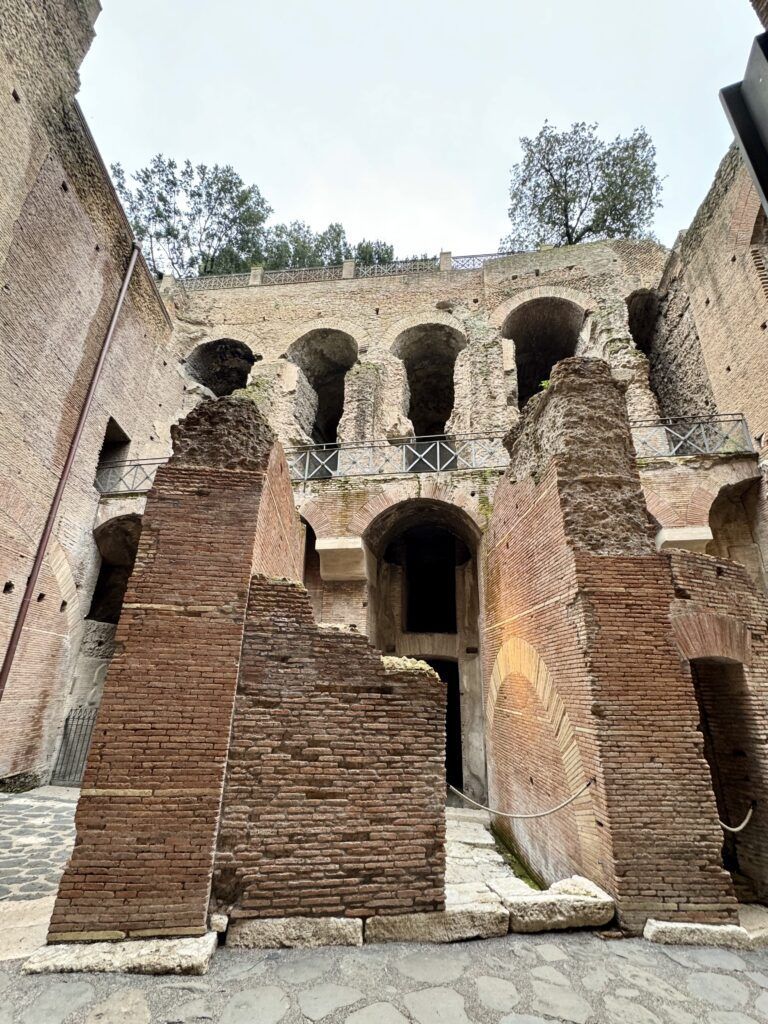
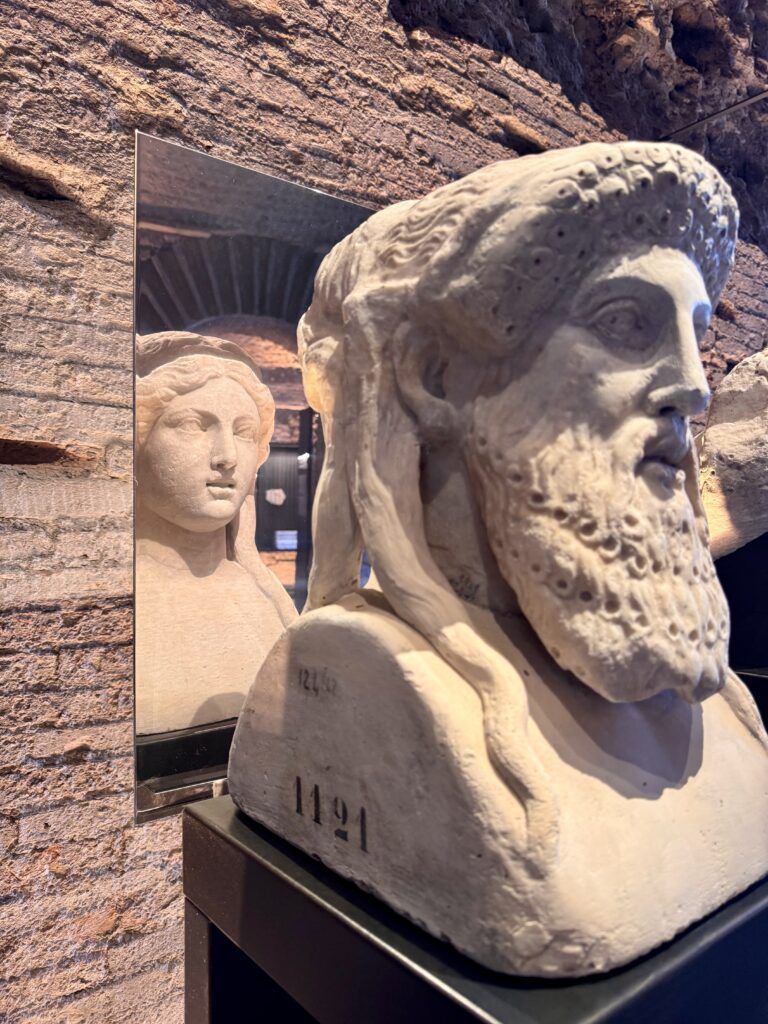
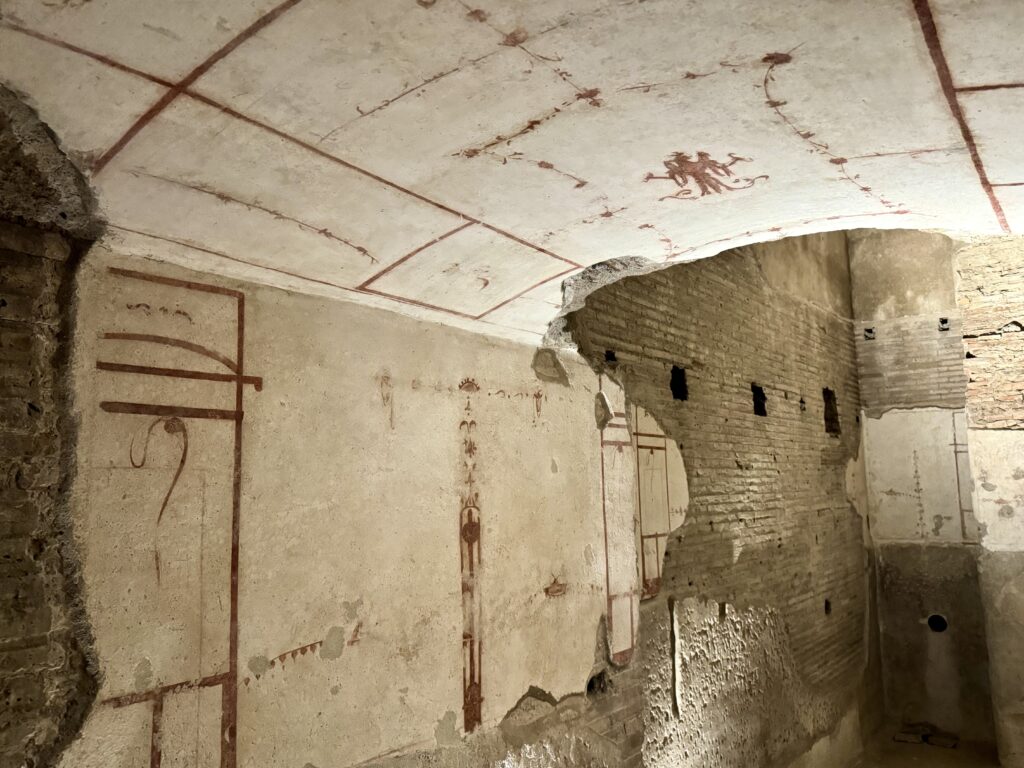
You can also see the “Bridge of Caligula.” This was once the front facade of the palace.
The 50 foot facade has two rows of arches. Though attributed to Caligula based on a statement by Suetonius, the “bridge” is actually a stucco-decorated loggia from the Domitian era.
During their digs, archaeologists also unearthed hundreds of precious artifacts — terracotta, frescos, stuccos, pottery and statues relating to the cults of Isis, Dionysus, and Mithras.
The terracotta pieces are especially exceptional. Many were once life size or larger statues.
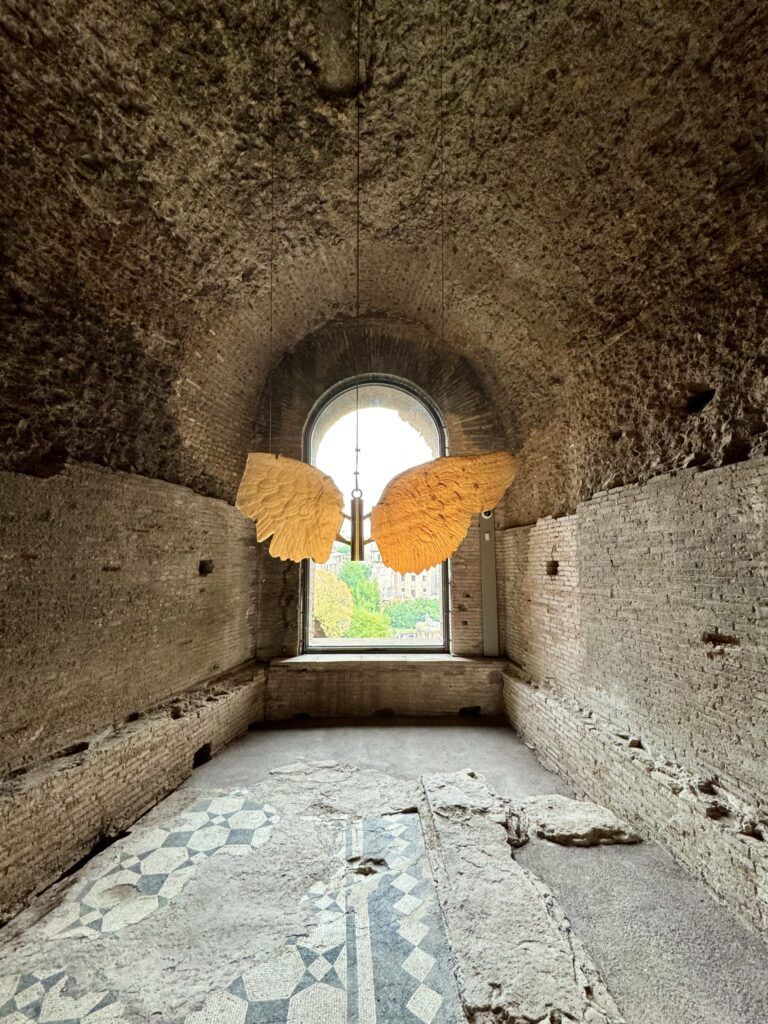
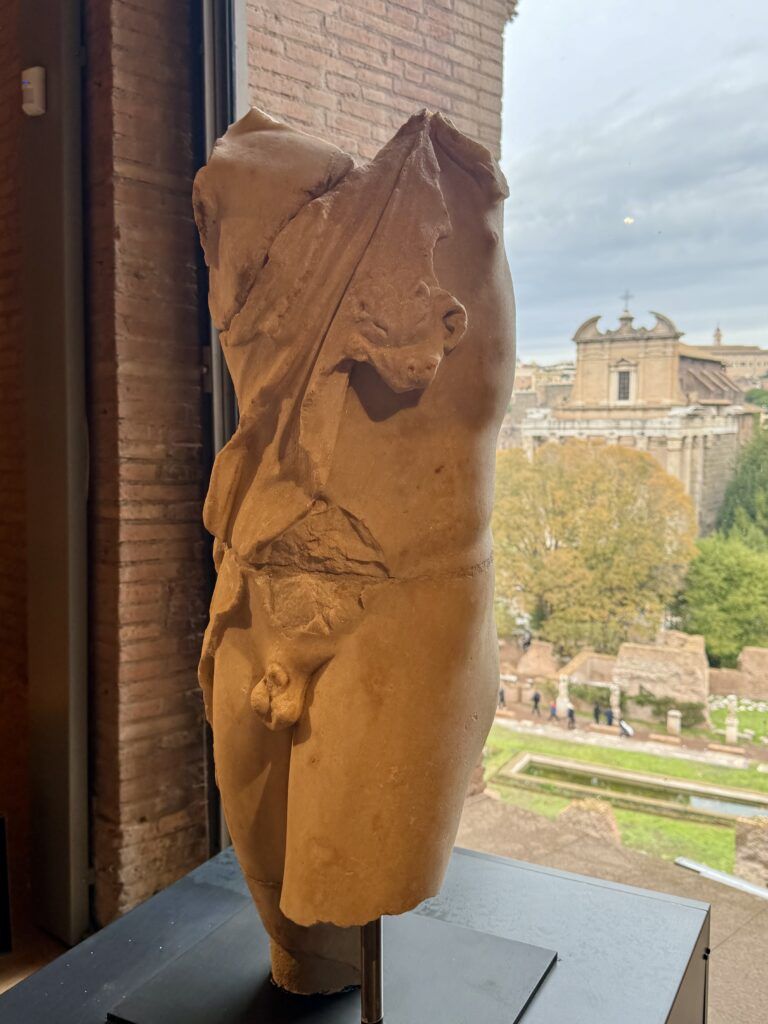
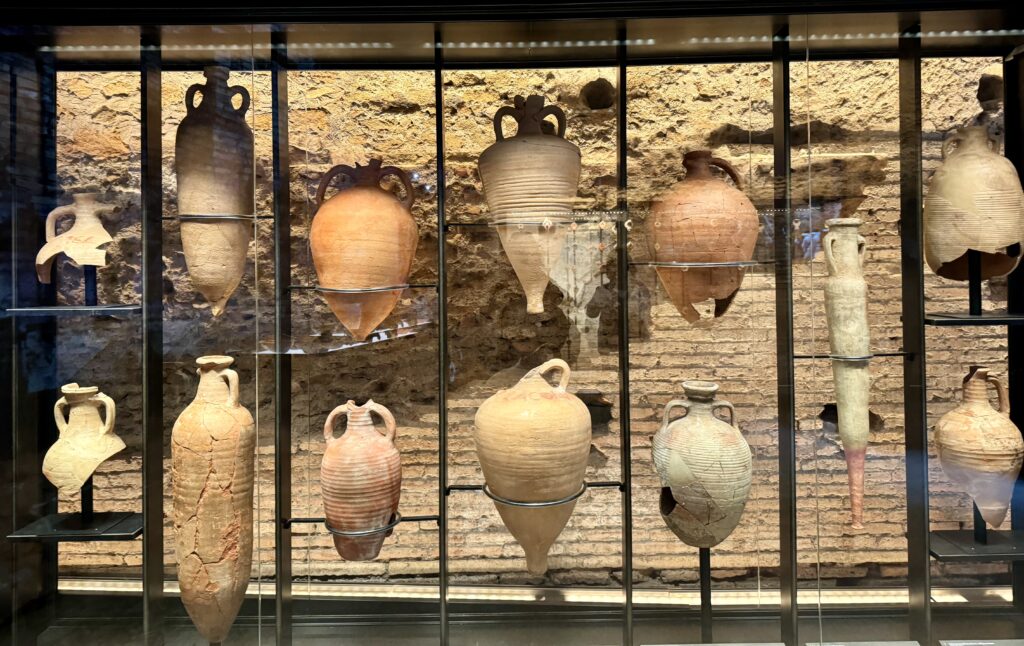
They were Roman copies of Greek originals. But they were of such refinement that they were likely made by masters like Pasiteles and Arkesilaos, who worked in Rome during the 1st century.
Archaeologists also found marble wings from two different statues of the goddess Victory. The best preserved set is restored and on display.
The artifacts are shown off in modern glass display cases in a series of galleries. You should be prepared to scan your ticket upon entering each room.
There’s also a multi-media room where you can see a holographic reconstruction of the palace.
The best part? Many of these rooms have windows offering up great views of the Roman Forum. There’s also a terrace to snap photos.
Practical Guide & Tips For Domus Tiberiana
Address: Palatino, Orti Farnesiani sul, Via della Salara Vecchia 5/6. The entrance is below the Farnese gardens. I had trouble finding it and had to ask a guard.
Hours: 9:30 am to 3:30 pm. The last entry is at 3:00 pm, and it’s strictly enforced.
Tickets:
You can only visit Domus Tiberiana with the SUPER ticket, a pass which gives you access to 8 restricted archaeological sites in the Roman Forum and Palatine Hill.
You can also book a guided tour.
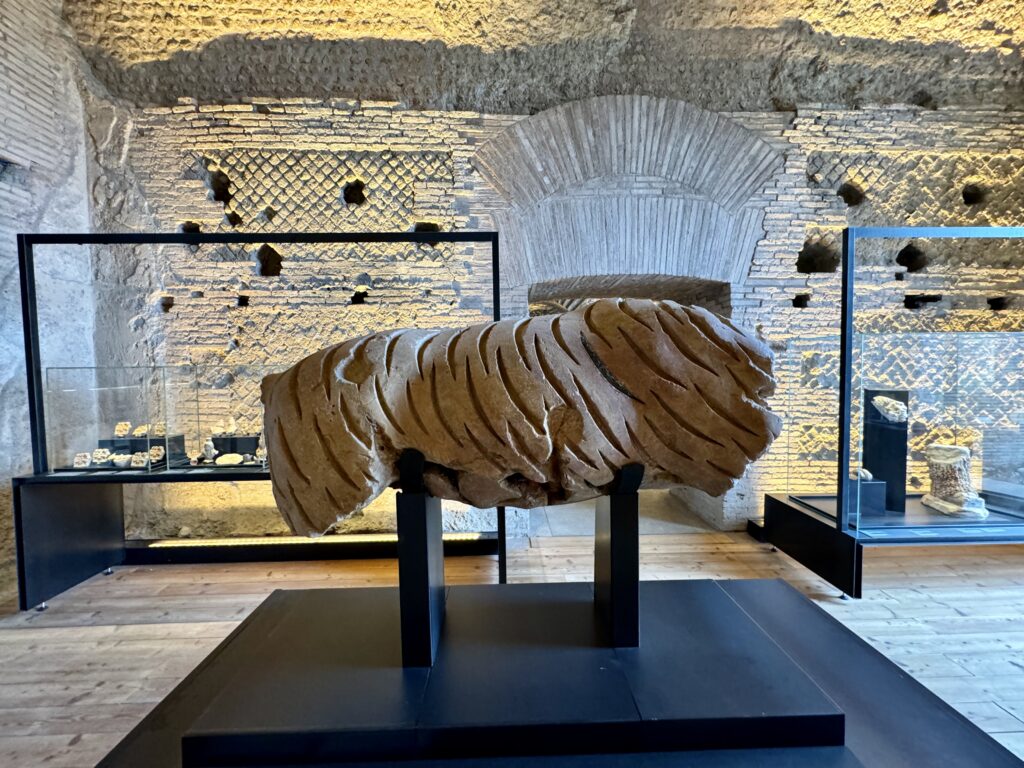
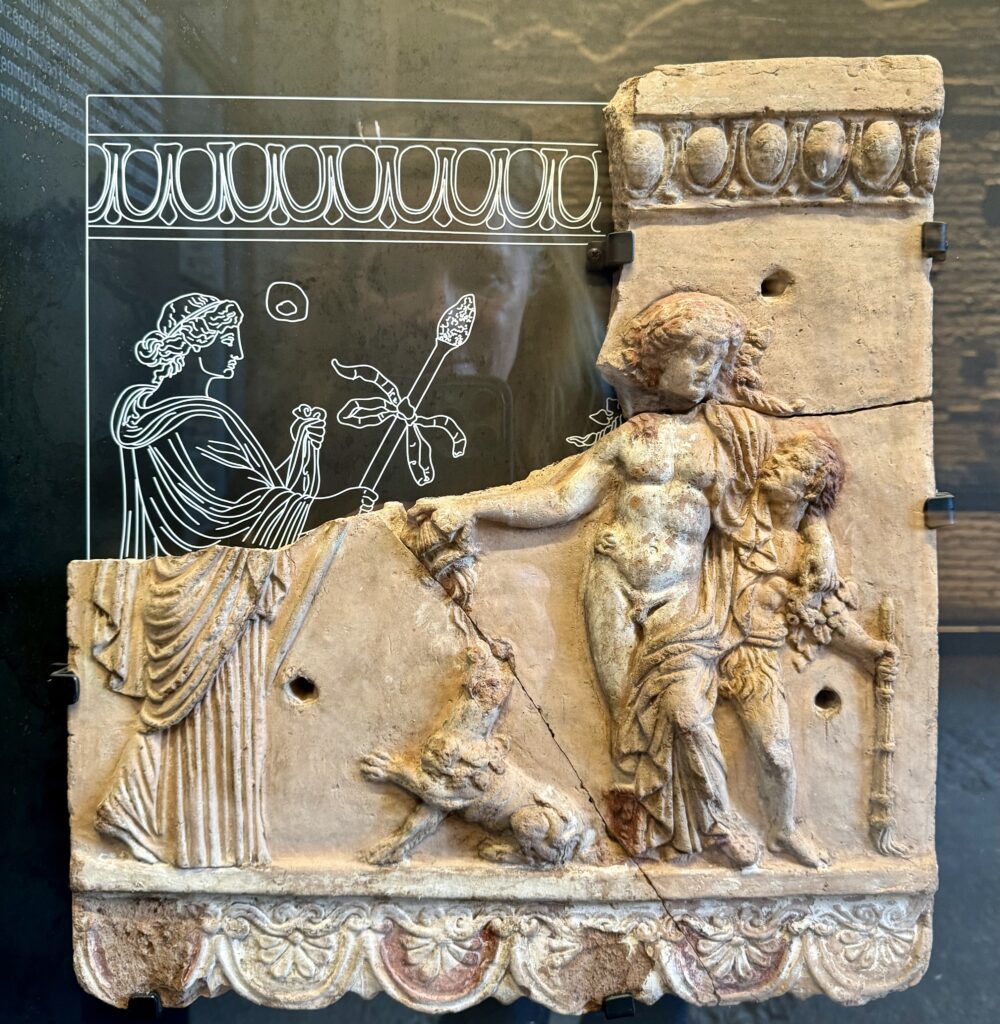
I hope you’ve enjoyed my guide to Domus Tiberiana. You may find these other Rome travel guides useful:
- 8 ways to spend 1 day in Rome
- 3 day itinerary for Rome
- 4 day itinerary for Rome
- 5 day itinerary for Rome
- Best museums in Rome
- Hidden gems in Rome
- Archaeological sites in Rome
- Guide to the Borghese Gallery
- Guide to Palatine Hill
- Guide to the Roman Forum
- Guide to the Colosseum
Pin it for later.

